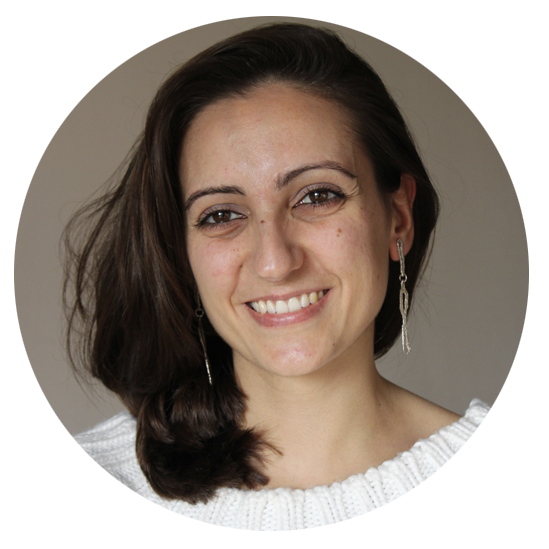
Agnese Fusaro
Associate Professor, University for Foreigners of Siena – International University
ORCID: orcid.org/0000-0001-9889-1195
ID Researcher: G-8999-2016
Scopus: 57207915555
Email: agnese.fusaro@gmail.com
Short biography
Archaeologist and specialist in the study of ceramics from the Islamic world. PhD in Islamic Archaeology, “Sapienza” University of Rome, 2014.
Her main research interests are ceramic productions, especially in the Middle East, Central Asia and the Indian Ocean regions; technology and manufacturing process; trade networks and related socio-economic-cultural patterns; ethnoarchaeology, study and preservation of enduring traditions.
She is a member of the ERAAUB (Team of the Archaeological and Archaeometric research studies) of the University of Barcelona. She has obtained the Italian Scientific Qualification for Assistant Professor in Archaeology, Discipline 10/N1 – Cultures of the Ancient Near East, Middle East and Africa. She is a member of the Editorial Boards of the Open Journal of Humanities (OJH) and the History Research Journal. She is also a member of the Referee Panels of several international journals and scientific volumes.
Since 2009 she has participated, as an archaeologist and pottery expert, in many international archaeological projects related to the Islamic world: Ghazni (Afghanistan), Shayzar (Syria), Sulaymaniyah (Iraqi Kurdistan), Isfahan, Istakhr (Iran), Banbhore (Pakistan), Termez, Kafir Kala and Samarqand (Uzbekistan), al-Baleed (Oman). In 2013 and 2020 she was awarded a contract for participating in the Project ‘Buddhist and Islamic Archaeological Data from Ghazni, Afghanistan. A multidisciplinary web-based archive for the managing, study, and preservation of an endangered and cultural heritage’ of the University of Naples “L’Orientale”, funded by the Gerda Henkel Stiftung. In 2016-2017 she was awarded a contract for participating in the SIMULPAST Project – ‘Social and environmental transitions: Simulating the past to understand human behaviour, Group 4 – Case study 5’ of the University of Barcelona.
She was involved in museum research activities concerning the study and new set-up of the Islamic collection at the International Museum of Ceramics (Faenza), and the preparation of small temporary exhibitions at the National Museum of Oriental Art (Rome) and the Museum of Near East, Egypt, and the Mediterranean (“Sapienza” University of Rome).
Until 2016 she was the head of the Islamic Archaeology courses concerning post-excavation processing of pottery at the “Sapienza” University of Rome. Since 2016, within the Joint Pakistani-Italian project at Banbhore, she has taught lessons on pottery analysis in the field to the staff members of the Culture and Antiquities Department of Sindh and students of different Universities in Sindh.
Since 2013 she has presented her work at many national and international conferences, among them: ICAANE, EAA, EASAA, EMAC, SAS. She is the author of numerous articles published in scientific volumes, conference proceedings, and national and international journals, such as Archaeological Research in Asia, Eurasian Studies, EVO, Iran – BIPS, Journal of Archaeological Science: Reports, Journal of Islamic Archaeology, Journal of Material Cultures in the Islamic World, Journal of Oman Studies, PSAS, Vicino Oriente.
Selected publications
- Fusaro, A., J.M. Gurt Esparraguera, E. Ariño Gil, P. Uribe Agudo, J. Angás Pajas, S.R. Pidaev (2022), “Islamic Ancient Termez: An Active and Long-Established Ceramic Manufacturing Centre Along The Silk Road”, Archaeological Research in Asia 31, pp. 1-25. https://doi.org/10.1016/j.ara.2022.100375.
- Piacentini Fiorani, V., A. Fusaro (2022), “Eleventh–twelfth century — political and economic balances in the western Indian Ocean in the light of historical and ceramic evidence from the site of Banbhore/Daybul”, Proceedings of the Seminar for Arabian Studies 51, pp. 247-270.
- Fusaro, A. (2020), “The Islamic port of al-Balīd (Oman), between land and sea: place of trade, exchange, diversity, and coexistence”, Journal of Material Cultures in the Muslim World 1, pp. 67-95.
- Fusaro, A. (2020), “Dealing with the Islamic Glazed Tiles from Ghazni Again: New Remarks on a Still Fascinating Topic”. In V. Laviola, M. Massullo (Eds.), Maḥabbatnāma. Scritti Offerti A Maria Vittoria Fontana Dai Suoi Allievi Per Il Suo Settantesimo Compleanno, Roma: Istituto per l’Oriente C.A. Nallino, pp. 163-193.
- Fusaro, A. (2018), “Opaque Glazed Wares from Istakhr: A Contribution to an Outstanding Issue”. In M.V. Fontana (ed.), Istakhr (Iran), 2011-2016. Historical and Archaeological Essays, Quaderni di Vicino Oriente XIII – 2018, Rome, pp. 353-395.
Selected projects
-
2021-Present: Specialist in charge of the study of the pottery from the excavation carried out at the site of Kafir Kala and from the surveys in the Samarqand region within the Joint Uzbek-Italian Archaeological Project at Samarqand and its Territory, University of Bologna “Alma Mater Studiorum” and Institute of Archaeology of Samarqand.
- 2021-Present: Specialist in charge of the study of the pottery from excavations and surveys within the Italian Archaeological Mission at al-Baleed (Oman), University of Naples “L’Orientale” and ISMEO – The International Association for the Mediterranean and Oriental Studies (Rome).
- 2019-Present: Specialist in charge of the study of the pottery from the excavations carried out at the site of Termez and the Surkhan Darya region within the Joint Uzbek-Spanish International Pluridisciplinary Archaeological Expedition to Bactria IPAEB, Institute of Fine Arts, Academy of Sciences of the Republic of Uzbekistan and University of Barcelona.
- 2012-Present: Specialist in charge of the study of the pottery from excavations and surveys within the Joint Pakistani-Italian Mission at Banbhore (Pakistan), Directorate General of Antiquities and Archaeology of Sindh and Catholic University of the Sacred Heart (Milan).
- 2017-2018: Principal investigator of the project for the study of the pottery from the citadel of al-Baleed (Oman) funded by the Max van Berchem Foundation.